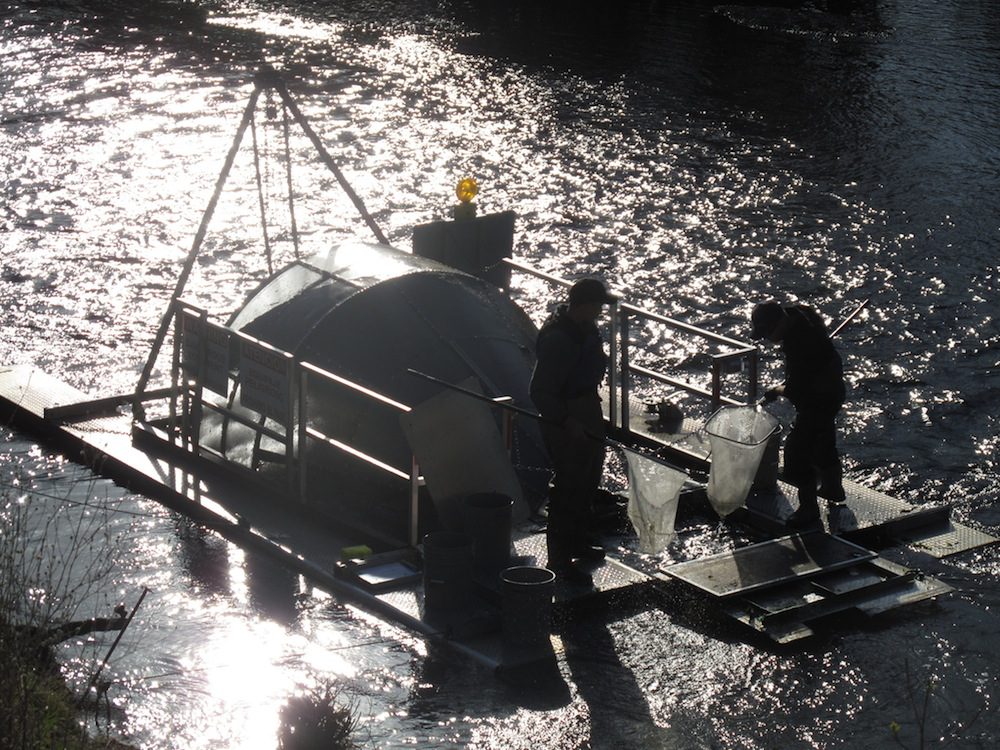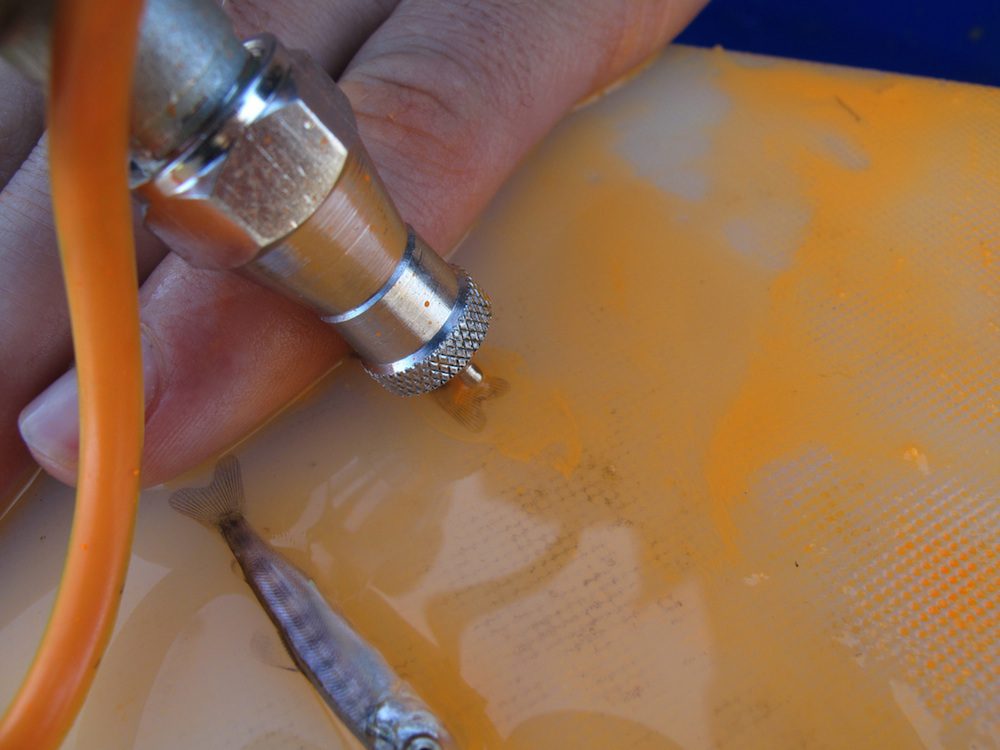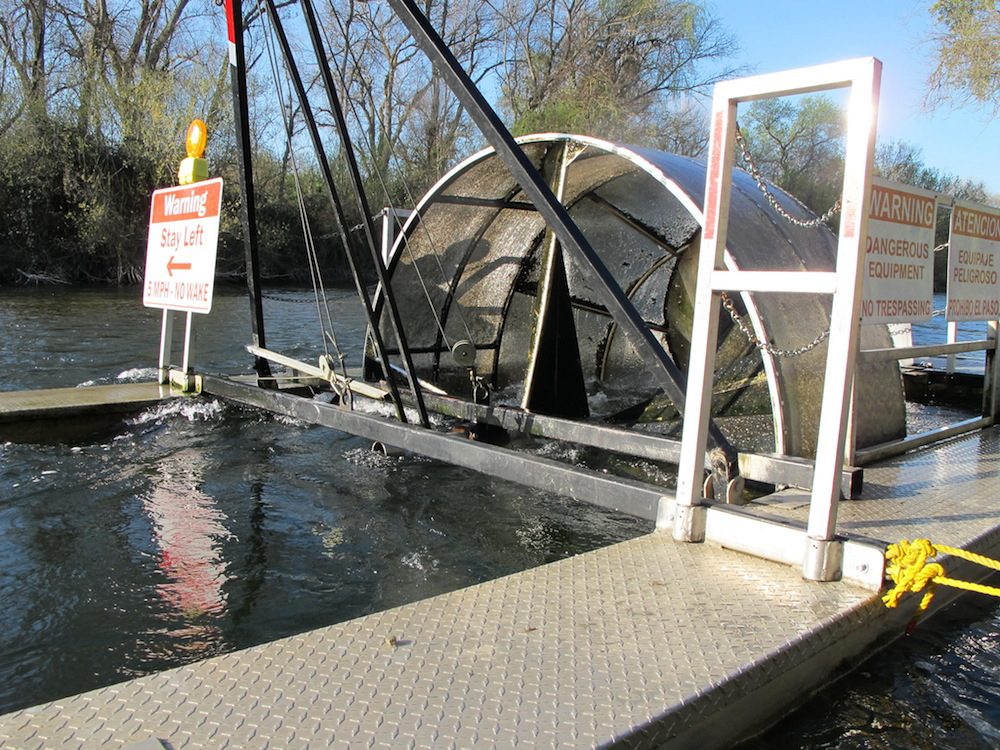Wednesday January 27, 2016
 Many times when we are out and about, we often get asked the same question: “What do you do?” The simple answer is that mostly, we count fish. However, in reality, the work is a little more complicated. In the fall, we’re focused on counting migrating adult salmon (see Following the Salmon Homecoming). In winter, our efforts shift to counting baby fish. The picture above is one of the many rotary screw traps (RST) that we maintain. The purpose of this trap is to catch juvenile salmonids that have recently hatched and are beginning their journey downstream towards the ocean. We use the data to help us estimate how many juvenile fish were produced by the adult salmon that migrated to a particular river. These traps are usually installed late in the year to begin monitoring on the first of the year. They will continue to monitor until the last of the salmon have migrated out of the tributary, which typically occurs around late June for fall-run Chinook salmon in the San Joaquin Basin. The traps float on two pontoons and, like their name suggests, rotate like a corkscrew in the middle of the river, trapping fish in a livewell.
Many times when we are out and about, we often get asked the same question: “What do you do?” The simple answer is that mostly, we count fish. However, in reality, the work is a little more complicated. In the fall, we’re focused on counting migrating adult salmon (see Following the Salmon Homecoming). In winter, our efforts shift to counting baby fish. The picture above is one of the many rotary screw traps (RST) that we maintain. The purpose of this trap is to catch juvenile salmonids that have recently hatched and are beginning their journey downstream towards the ocean. We use the data to help us estimate how many juvenile fish were produced by the adult salmon that migrated to a particular river. These traps are usually installed late in the year to begin monitoring on the first of the year. They will continue to monitor until the last of the salmon have migrated out of the tributary, which typically occurs around late June for fall-run Chinook salmon in the San Joaquin Basin. The traps float on two pontoons and, like their name suggests, rotate like a corkscrew in the middle of the river, trapping fish in a livewell.
Each day, FISHBIO staff will visit our trapping sites to identify and count each species of fish captured in the trap, with a focus on the juvenile salmon. We measure the lengths of a sample of fish from the daily catch throughout the season and use the information to determine size at migration. With the recent rainfall, freshets have begun to cue the young juvenile Chinook salmon to begin their migration to the ocean, and so far we have sampled roughly 5,500 salmon in the Stanislaus River rotary screw trap in Oakdale. Outmigration numbers are lower than we would expect considering the high adult returns on the Stanislaus River last fall, but factors such as egg mortality due to high fall temperatures, delayed migration and trap efficiencies will help to piece the puzzle together later in the season. The trap only samples a portion of the river, so we also conduct experiments to test the efficiency of the trap by marking a known number of fish with a distinguishing mark on their tail fins, and releasing them upstream of the trap. The percentage of marked fish that are recaptured in the trap are an indication of the percentage of all the migrating juvenile fish that we are capturing on a weekly basis. After conducting these experiments multiple times throughout the year, we are able to estimate the total number of young fish hatched from eggs laid by the adult Chinook salmon that spawned during the previous fall. That’s our juvenile salmon monitoring work in a nutshell – but sometimes, it’s easier to just say, “We count fish.”



